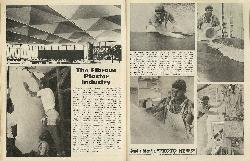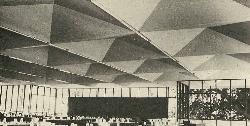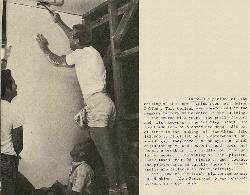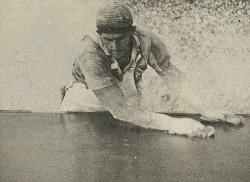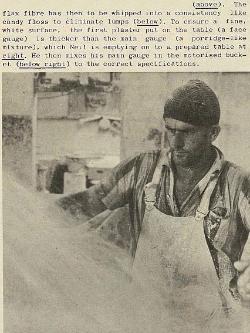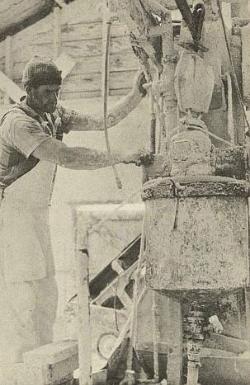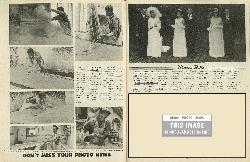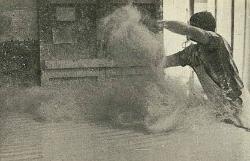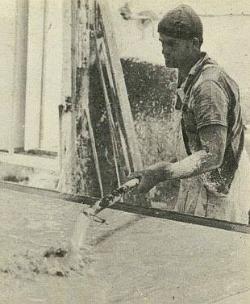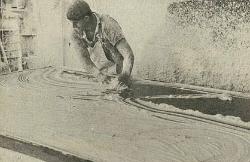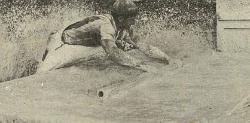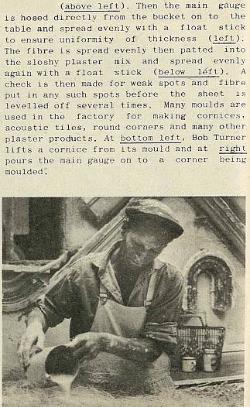20
The Fibrous Plaster Industry
Seldom, if ever today, is the old lathe and plaster method of covering interior walls of buildings used. Instead, builders and home-makers rely upon fibrous plaster board to do this work. In Nelson, serving the needs of builders in this sphere, is the small but thriving firm of Riggirs Fibrous Plaster Products, and the pictures we reproduce on these three pages tell the story of fibrous plaster in the making. As an example of what can be accomplished with fibrous plaster, we print a picture of the ceiling of the new dining-room at Nelson College, This ceiling was pre-moulded at the Riggirs factory and erected in the building. In the course of a year, the small factory and its two-man manufacturing staff use about 400 tons of plaster and about 260 cwt of fibre in the making of something like 182,000 sq ft of fibrous plaster-board and mouldings. They have an occupation which calls for speed and dexterity and does not permit a break in the middle of the job for a "smoko". The making of the. plasterboard takes about 25 minutes, and because the plaster sets so quickly these 25 minute spells are filled with great activity.
21
The plaster board is made on table tops, each of which must have a blemish-free surface. To ensure that the plaster will not stick to the top, the first job performed by Neil Hobbs is to grease lightly the surface The flax fibre has then to be whipped into a consistency like candy floss to eliminate lumps To ensure a fine, white surface, the first plaster put on the table (a face gauge) is thicker than the main gauge (a porridge-like mixture), which Neil is emptying on to a prepared table at right. He then mixes his main gauge in the motorised bucket to the correct specifications.
22
The face gauge is then spread evenly over the table (above left). Then the main gauge is hosed directly from the bucket on to the table and spread evenly with a float stick to ensure uniformity of thickness (left) The fibre is spread evenly then patted into the sloshy plaster mix and spread evenly again with a float stick (below left). A check is then made for weak spots and fibre put in any such spots before the sheet is levelled off several times. Many moulds are used in the factory for making cornices, acoustic tiles, round corners and many other plaster products. At bottom left, Bob Turner lifts a cornice from its mould and at right pours the main gauge on to a corner being moulded.


